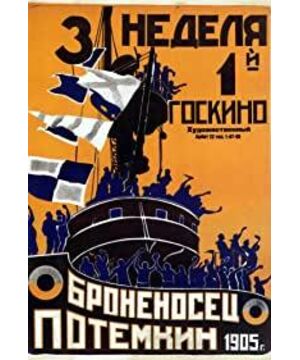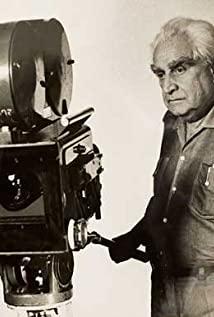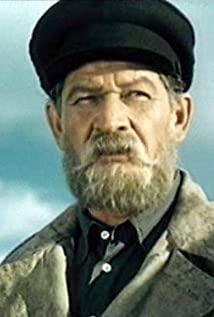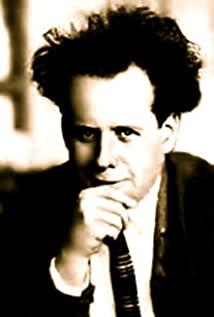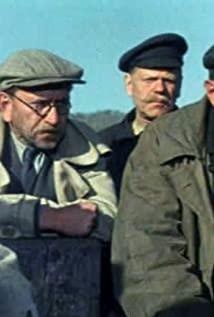The reason why the film is remembered today is that director Eisenstein pioneered the montage shooting technique. The scenes of the maggots on the pork, the masts the soldiers looked up at, the stone lions awakening from a deep sleep, the Odessa stairs and other scenes triggered a revolution in filmmaking. Since then, people have discovered that two seemingly unrelated shots can be linked together by people's brains and given new meanings. For example, the first shot is a sailor who is looking up, and the second shot is a mast. We naturally think that they are looking up at the mast. A distant view of the angry people after sacrificing sailors is connected with a close-up of their clenched fists, which is also very natural to us.
Parallel montage is a technique often used by Eisenstein. For example, after a riot on a warship, scenes of sailors walking down the stairs and people fighting together in the cabin appear interspersed; scenes of people giving speeches at the port and the constantly gathering crowds and gatherings. The shots of the rising sailor are cross-displayed at the same time. These are all parallel presentations of things happening in different spaces at the same time to narrate the story.
The slaughter scenes on the Odessa stairs appearing in the film are classic scenes in film history. In the movie, the neatly arranged army, armed with rifles, moved from the top of the steps to the people below, firing frantically at them. A child and his mother were separated in the running crowd. The child was shot and fell to the ground and was trampled by the dodge crowd. The woman returned to the child's side and walked towards the army holding the seriously injured him, and the music stopped. The woman shouted at the army that my child was seriously injured and needed medical treatment. The army's gun was aimed at the mother and son, the bayonet stretched forward, the gunshot, and the woman holding the child fell down. People heard gunshots scattered and fled, avoiding bullets. The young mother in black pushing the stroller stiffened on the steps at the gunshot. A bullet hit her abdomen, and she covered the wound with her hand, bleeding from her fingers. Finally she fell in front of her crying child. The stroller slowly slid down and lay on the steps full of corpses, turning to the ground. The scenes of people running are interspersed with the stroller sliding down, and the nervous and tragic emotions are repeatedly rendered. This set of montage shots showed nearly 150 short shots with an average of three seconds in six minutes, prolonging the psychological time of the film. The not-so-long Odessa ladder became a symbol of the czar’s long and cruel reign. In these six minutes, the long-range, close-range, medium-range and close-up alternately appeared. The extensive use of fast-paced short shots undoubtedly shows the skill of Eisenstein's lens. Since then, the Odessa Stairs has become the object of homage and imitation by countless filmmakers.
[Battleship Potemkin] After all, it is a Soviet movie of the 1920s, and Eisenstein's movie is also to promote the proletarian revolution. He incorporated ideological propaganda into smooth narrative, mature and groundbreaking shooting techniques. The story is fluently narrated, the contradiction is constantly deepening, close-ups and repeated rendering of the ruthless rule of the ruler, just like the commander of a battleship with a big beard and waving his hand to wrap the soldiers who don’t drink broth in canvas and then shoot the gun. die. Of course, I would also be impressed by the rich human resources of the Soviet Union at that time. It didn't matter to kill dozens of soldiers. Since then, "a sailor was killed for a bowl of soup" has also become the fuse for people on the shore to resist the revolution.
It is also necessary to mention the priest on the warship with teeth and claws that looked like the golden lion king. He held a cross to add fuel to the officer’s anger. Facing the revolution, the sailors shouted to remember God. The sailors were dissatisfied with the lion king and then insulted them. The ground scolded him and pushed him to the ground. The lion king's cross fell violently on the deck. All these indicate that religion is one of the enemies to be defeated in the proletarian revolution. However, the Orthodox Church was too ingrained in the Slavic peoples. This was directly their spiritual support and the foundation of existence. Therefore, the subsequent Soviet government was helpless and impossible to be completely atheistic. After the disintegration of the Soviet Union, the Orthodox Church has undoubtedly restored its former status.
When the bodies of the sacrificial sailors were laid on the shore, all the suffering people basically came to commemorate. An old woman knelt down in front of his body and sobbed. Two broad ladies in dresses and parasols walked past them, shining white skirts dangling their gray clothes. The ladies of Kuo looked into the tent, nodded their feet and turned away casually. Facing the cry of the poor, capitalists and military officers in suits were talking and laughing. Eisenstein successfully used these contrasts to let the audience see the gap between classes. The hatred that was deeper than the sea was lifted up all at once, and the revolution became a smooth sail.
It is indeed very possible that the revolution was triggered by a seemingly simple thing, but there are inevitably some exaggerations in it. For example, I always feel that, of course, when they see the remains of the sailor, it is a bit anxious to shout "Fight the Tsar", and there is no process of deepening the contradiction in the middle.
The red flag raised by the warship during the revolution definitely became the most eye-catching feature in the movie. Originally, in the silent film era, red in black and white images was very rare, which further demonstrated the passion of the revolution. All film critics must mention the three shots of the group of stone lions sleeping, opening their eyes, and getting up. The use of expressive montage allows the director to express the proletariat's awakening and triumphant theme that he wants to express, and to express more boldly.
The success of [Battleship Potemkin] is definitely not just the use of montage, the script creation and filming maturity, the rhythm control, the connection of music, and the expression of the main melody are actually very sophisticated and ingenious. The films that brought about these two revolutions a hundred years ago still have a lot of reference for our current filmmaking.
When it comes to the significance of reference, I cannot fail to mention the propaganda of the mainstream ideology of domestic films. [Battleship Potemkin] has deepened my sense of shame for some of the main theme movies filmed in China. The main film is the [Super Typhoon] filmed by Feng Xiaoning. This film made me feel that Dao Feng is the most powerful spoof master in China, and he has brought the distortion of "heroes" to another realm. There are movies with the main theme in every country, and American blockbusters are also the propaganda of the mainstream ideology, but we are also willing to accept their propaganda when watching that movie. Some domestic film producers just don’t have the brains, and the films they make are just stupid. It makes people wonder why so many people are still professionals, and they don’t even know how to make smarter publicity. Who can be fooled? what.
11.26.08
View more about Battleship Potemkin reviews


